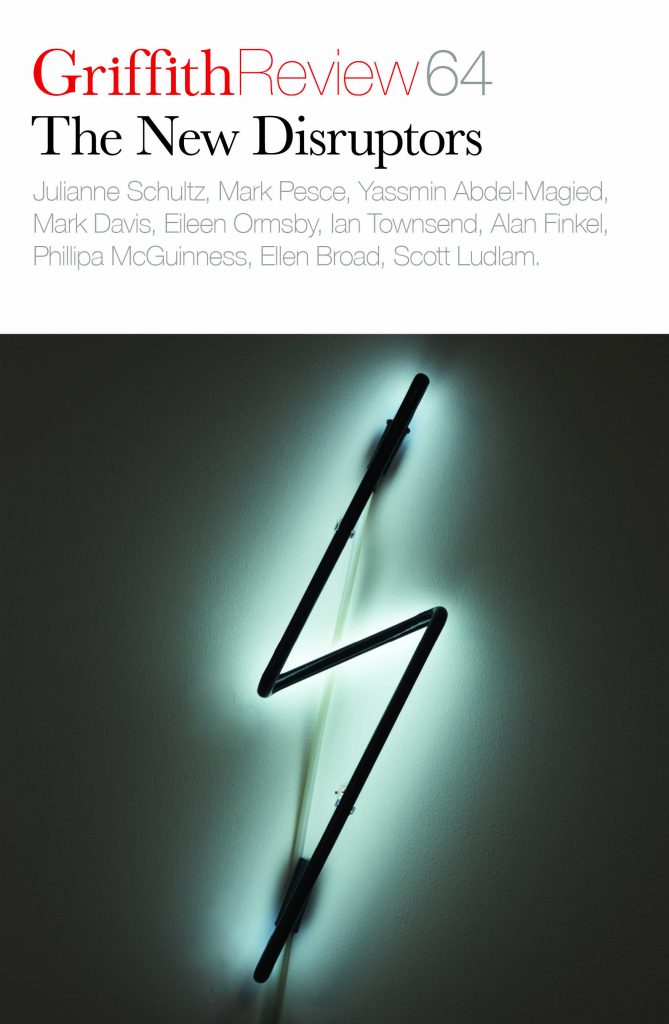Featured in

- Published 20190507
- ISBN: 9781925773620
- Extent: 264pp
- Paperback (234 x 153mm), eBook

Already a subscriber? Sign in here
If you are an educator or student wishing to access content for study purposes please contact us at griffithreview@griffith.edu.au
Share article
About the author

Margaret Gibson
Margaret Gibson is a cultural sociologist and academic at Griffith University. Her books include Objects of the Dead: Mourning and Memory in Everyday Life...
More from this edition

Don’t do it yourself
MemoirIT’S FUNNY TO think that a broken gearbox could lead to a physics student folding T-shirts in my lounge room, but that’s the internet...

Networked hatred
EssayEVERY ERA IS defined by its sustaining myths. Among ours is surely ‘disruption’. The book that seeded the mythology, Clayton Christensen’s The Innovator’s Dilemma...

Hashtag war
EssayTHE CAR JOURNEY from Canberra airport to the parliamentary triangle is a necessary trip for Federal politicians. One route heads south along the Monaro...